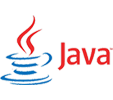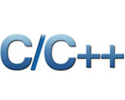Author: Brijesh
Date: 10-11-2025
Meta Description: Explore the top web development trends, technologies, and innovations shaping 2025. Discover why businesses are hiring dedicated full stack developers from India for scalable, high-performing web apps.
As we step into 2025, web application development continues to evolve at an unprecedented pace. From AI-powered user experiences to cloud-native architectures and serverless systems, the web development landscape has transformed significantly over the last decade. Businesses are now focusing not just on building functional websites but on delivering immersive, intelligent, and scalable web experiences that engage users globally.
To stay competitive, companies worldwide are partnering with a full stack development team in India — leveraging cost efficiency, innovation, and technical expertise. With a strong foundation in end-to-end web technologies, these teams deliver customized digital solutions that are faster, smarter, and future-ready.
In this detailed 2000+ word blog, we’ll explore what the future holds for web application development in 2025 — including emerging trends, frameworks, and the growing role of dedicated full stack developers in driving innovation and business success.
1. Evolution of Web Application Development
The journey of web application development began with simple static HTML pages. Over time, dynamic content, databases, APIs, and advanced frontend frameworks revolutionized how web applications were built and experienced. The current era focuses on performance optimization, personalization, automation, and security.
| Decade | Key Web Development Trends | Technology Examples |
|---|---|---|
| 2000–2010 | Static to Dynamic Websites | PHP, MySQL, HTML4, CSS2 |
| 2010–2020 | Responsive and Cloud-Connected Apps | React, Angular, Node.js, AWS |
| 2020–2025 | AI-Driven, Serverless, and Headless Web Development | Next.js, GraphQL, WebAssembly, AI APIs |
In 2025, businesses are not only focusing on what users see but also on how web apps behave — delivering hyper-personalized, lightning-fast, and intelligent user journeys.
2. Key Trends Shaping Web Application Development in 2025
2.1 Artificial Intelligence (AI) and Machine Learning (ML) Integration
AI has moved from being a buzzword to becoming an essential component of web applications. Developers now use AI for predictive analytics, user personalization, content recommendations, and even automated code generation.
| Use Case | AI Application in Web Apps |
|---|---|
| Personalization | AI recommends personalized content and layouts. |
| Chatbots & Virtual Assistants | Automated customer support through AI chatbots. |
| Predictive Analytics | Machine learning predicts user actions and improves UX. |
Example: E-commerce platforms now use AI-driven analytics to predict buying behavior and recommend products automatically.
2.2 Progressive Web Apps (PWAs)
Progressive Web Apps continue to be one of the most influential trends. They combine the best of web and mobile apps — offering offline access, push notifications, and lightning-fast load speeds. PWAs are cost-effective for startups and enterprises alike because they eliminate the need for separate Android/iOS apps.
| Feature | Benefit |
|---|---|
| Offline Functionality | Works even without internet connection. |
| Faster Loading | Uses caching for quick access. |
| Cross-Platform Compatibility | Single codebase for all devices. |
Global brands like Starbucks and Pinterest have already transitioned to PWAs, cutting costs by up to 60% while doubling user engagement.
2.3 Serverless Architecture and Cloud Integration
Serverless computing allows developers to build and deploy web applications without managing servers. In 2025, this trend will continue to dominate, enabling faster scalability, cost reduction, and zero maintenance.
| Provider | Service Example | Advantage |
|---|---|---|
| AWS | Lambda | Auto-scaling and pay-per-use model |
| Google Cloud | Cloud Functions | Event-driven backend execution |
| Azure | Functions | Seamless CI/CD integration |
Why It Matters: Startups and enterprises can now build enterprise-grade web apps without investing heavily in infrastructure — a major advantage for scalability and innovation.
2.4 WebAssembly (WASM)
WebAssembly is changing the performance game for web applications. It allows developers to run high-performance code (like C++ or Rust) in browsers — enabling faster computation, gaming, and even AI-driven web apps.
In 2025, WebAssembly will be widely used for data visualization, scientific modeling, and video processing web apps, improving browser performance by up to 10x.
2.5 Headless CMS and API-First Development
Headless architecture separates the frontend from the backend, giving developers flexibility to use APIs for dynamic content delivery. This is essential for omnichannel experiences — web, mobile, IoT, and AR/VR interfaces.
| Headless CMS Example | Key Benefit |
|---|---|
| Strapi | Open-source, self-hosted flexibility |
| Contentful | Enterprise-grade API-first CMS |
| Sanity.io | Real-time collaboration features |
3. The Growing Importance of Full Stack Development Teams in 2025
The demand for full stack development teams in India has skyrocketed as businesses seek agile, cost-efficient solutions. A full stack developer can handle everything from frontend interfaces to backend architecture, cloud integration, and API development.
| Skill Set | Technology Stack |
|---|---|
| Frontend | React, Angular, Vue.js, HTML5, CSS3 |
| Backend | Node.js, Python (Django, Flask), PHP, Java, .NET |
| Database | MySQL, PostgreSQL, MongoDB, Firebase |
| Cloud & DevOps | AWS, Azure, Docker, Kubernetes |
With such diverse skill sets, a dedicated full stack developer can build, optimize, and scale your web application end-to-end.
4. Emerging Frameworks Dominating Web Development in 2025
Frameworks and tools evolve constantly. In 2025, the following frameworks are leading the charge:
| Framework | Primary Use | Key Benefit |
|---|---|---|
| Next.js | React-based Server-Side Rendering (SSR) | Better SEO and page performance |
| Nuxt.js | Vue-based SSR Framework | Faster frontend development |
| SvelteKit | Lightweight frontend apps | Smaller bundle size and better UX |
| Laravel + Vue.js | Full Stack PHP Framework | Quick development for startups |
Developers App India’s full stack development team in India specializes in using these modern frameworks to create scalable and high-performing web solutions.
5. Cloud-Native Development and Edge Computing
As data grows exponentially, moving closer to the user is key. Edge computing ensures faster delivery and minimal latency by processing data near its source. Cloud-native web apps built on microservices architecture allow businesses to scale dynamically and handle large user volumes efficiently.
With a dedicated full stack developer, startups can build cloud-native web solutions using AWS Lambda, Kubernetes, and container-based architecture — optimizing performance and reducing server costs by up to 50%.
6. Security and Data Privacy in 2025
Cybersecurity remains a top priority. With increased remote work, digital payments, and personal data sharing, businesses must ensure multi-layered protection through:
- Multi-Factor Authentication (MFA)
- Zero-Trust Architecture
- End-to-End Encryption
- Compliance with GDPR, ISO, and HIPAA
Full stack developers incorporate security protocols directly into code, ensuring compliance and protecting data across all layers of the application.
7. The Role of Automation and DevOps in Future Web Development
Automation tools like Jenkins, GitHub Actions, and Docker streamline continuous integration and deployment. In 2025, DevOps practices are mandatory for businesses seeking quick feature releases and robust testing pipelines.
| Automation Tool | Function |
|---|---|
| Jenkins | Continuous Integration & Delivery (CI/CD) |
| Docker | Containerization for portability |
| Kubernetes | Container orchestration and scaling |
Automation reduces human errors, speeds up releases, and ensures better collaboration between teams — something every full stack development team in India leverages for efficient delivery.
8. The Rise of Low-Code and No-Code Platforms
Low-code tools like OutSystems, Mendix, and Bubble are helping businesses launch web apps faster without extensive coding. However, for scalability and customization, traditional full stack development remains indispensable.
Pro Tip: Combine low-code tools for MVPs and full stack expertise for production-ready solutions.
9. Why Hire Full Stack Developers from Developers App India
Developers App India provides skilled dedicated full stack developers who deliver world-class web applications using the latest technologies. Whether it’s building a SaaS product, eCommerce app, or enterprise dashboard, our team ensures agility, performance, and scalability.
| Our Advantage | Benefit to Clients |
|---|---|
| Experienced Team | 10+ years of expertise in modern web frameworks |
| Agile Development | Iterative progress with fast delivery cycles |
| Cost Efficiency | Up to 60% savings compared to global rates |
| Dedicated Support | 24/7 assistance and post-launch maintenance |
| Custom Solutions | Tailored web apps aligned with your business goals |
10. Conclusion: The Future Is Full Stack, AI-Driven, and Cloud-First
The future of web application development in 2025 is all about innovation, automation, and seamless user experiences. Businesses that embrace these technologies will gain a significant competitive edge in their industries.
By collaborating with a full stack development team in India, you can future-proof your web app strategy — ensuring cost-effectiveness, technical expertise, and long-term scalability. The rise of AI, cloud computing, and automation will continue to redefine how web applications are built and delivered, making this the perfect time to invest in modern web technologies.
Call-to-Action
- 🚀 Ready to build the future? Hire dedicated full stack developers from Developers App India to create next-gen web apps.
- 💡 Looking for scalable digital solutions? Partner with our full stack development team in India for end-to-end project success.
- ⚙️ Need expert tech consultation? Contact Developers App India today for a free consultation and strategy session.
Shape the future of your business with full stack innovation — engineered, designed, and delivered by Developers App India.
50Your choice of weapon
Build your Apps for any Platform
We to code. It's our passion










you can also reach us at our given
email address or phone number.




